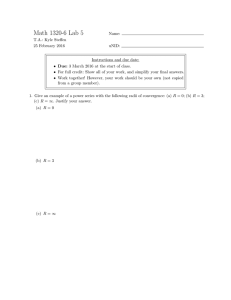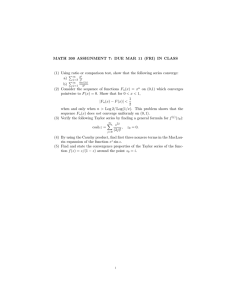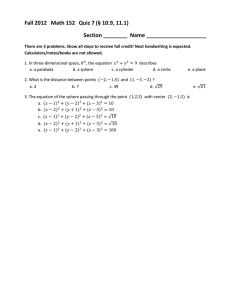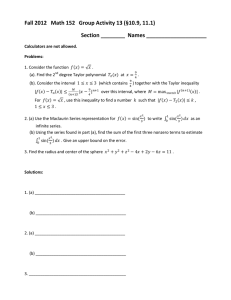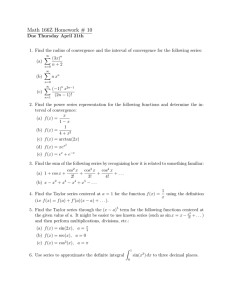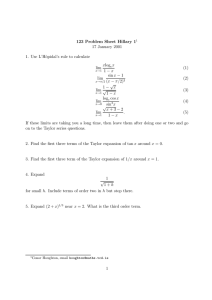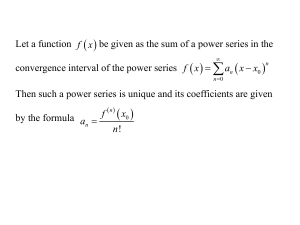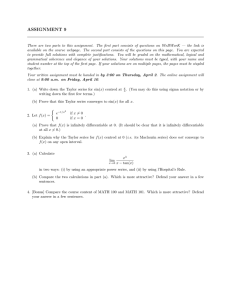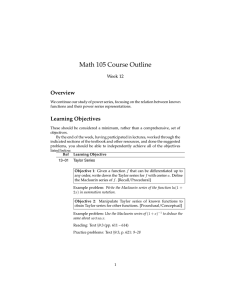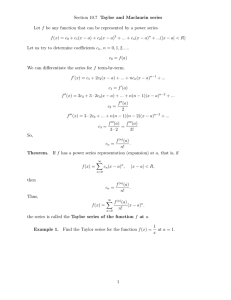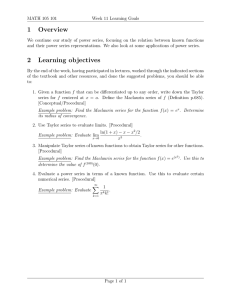Math 1B worksheet Oct 21, 2009
advertisement
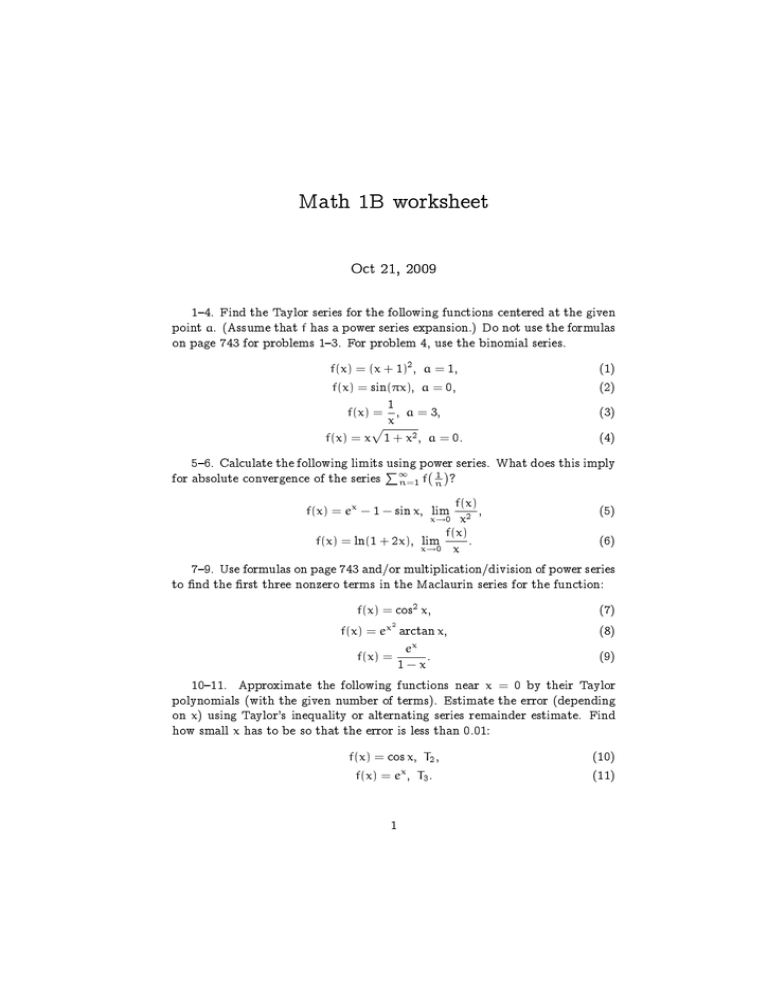
Math 1B worksheet
Oct 21, 2009
1{4. Find the Taylor series for the following functions centered at the given
point a. (Assume that f has a power series expansion.) Do not use the formulas
on page 743 for problems 1{3. For problem 4, use the binomial series.
f(x) = (x + 1)2 , a = 1,
f(x) = sin(πx), a = 0,
1
f(x) = , a = 3,
px
f(x) = x 1 + x2 , a = 0.
(1)
(2)
(3)
(4)
5{6. Calculate the following limits P
using power
series. What does this imply
∞
1
for absolute convergence of the series n=1 f n ?
f(x)
,
x2
f(x)
f(x) = ln(1 + 2x), lim
.
x→0 x
f(x) = ex − 1 − sin x, lim
x→0
(5)
(6)
7{9. Use formulas on page 743 and/or multiplication/division of power series
to nd the rst three nonzero terms in the Maclaurin series for the function:
f(x) = cos2 x,
x2
f(x) = e
arctan x,
x
f(x) =
e
1−x
.
(7)
(8)
(9)
10{11. Approximate the following functions near x = 0 by their Taylor
polynomials (with the given number of terms). Estimate the error (depending
on x) using Taylor's inequality or alternating series remainder estimate. Find
how small x has to be so that the error is less than 0.01:
f(x) = cos x, T2 ,
f(x) = e , T3 .
x
1
(10)
(11)
Hints and answers
1. f(x) = 4 + 4(x − 1) + (x − 1)2 .
2. f(x) =
3. f(x) =
4. f(x) =
P∞
(−1)n π2n+1 x2n+1
.
n=0
(2n+1)!
P∞
n −n−1 n
x .
n=0 (−1) 3
2n+1
P∞
1/2
.
n=0 n x
x3
x2
5. We nd f(x) = 2 + 3 + · · · .
Answer: 1/2; converges absolutely.
6. We nd f(x) = 2x − 2x2 + · · · .
Answer: 2; does not converge absolutely.
7. f(x) = 1 − x2 + 13 x4 + · · · .
8. f(x) = x + 32 x3 + 11
x5 + · · · .
30
9. f(x) = 1 + 2x + 52 x2 + · · · .
10. T2 (x) = 1 − 21 x2 = T3 (x); |f(x) − T2 (x)| 6
11. T3 (x) = 1 + x +
x2
2
+
x3
6
x4
24
.
4
; |f(x) − T3 (x)| 6 max(1, ex ) x24 .
2
